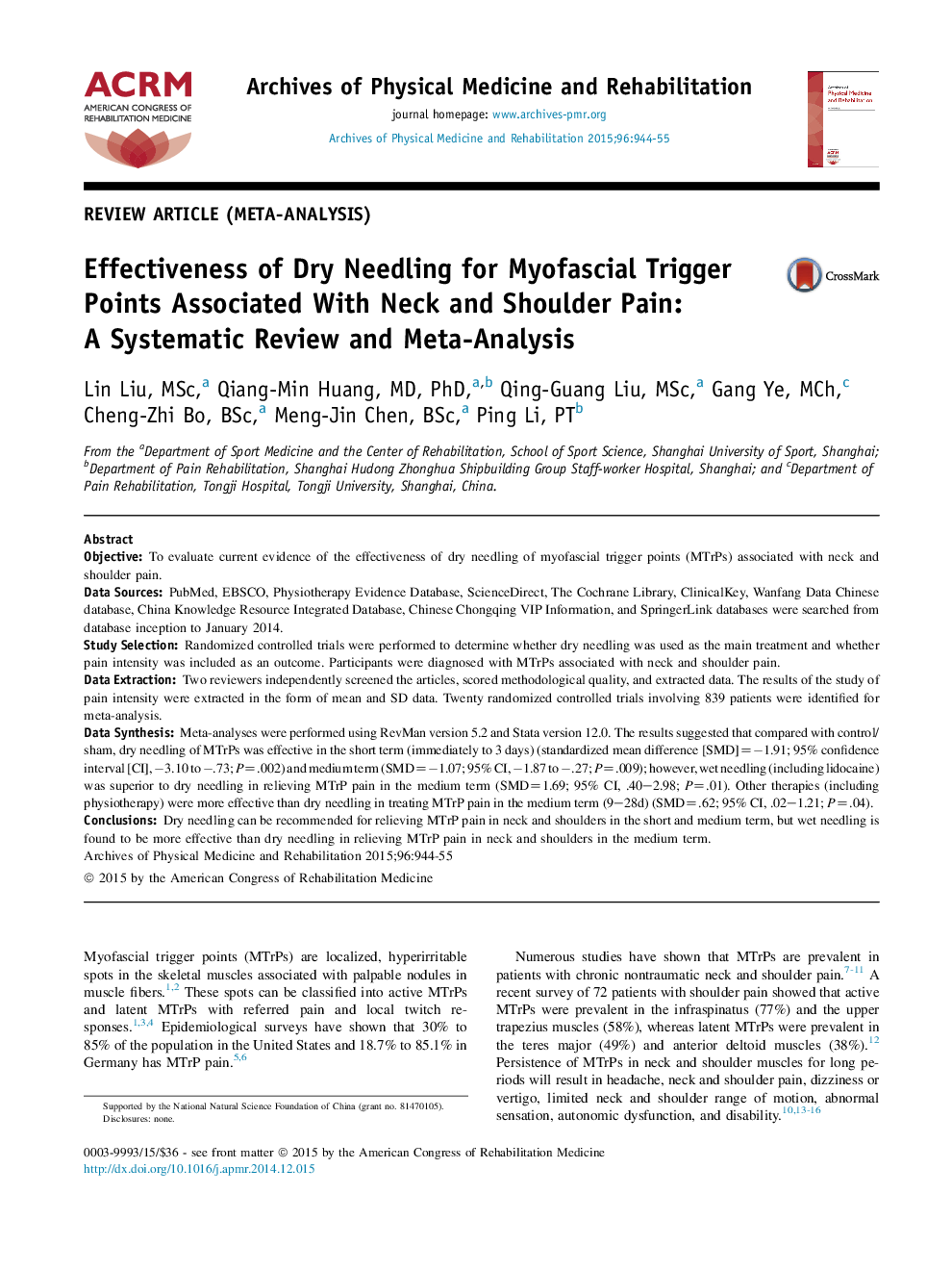| کد مقاله | کد نشریه | سال انتشار | مقاله انگلیسی | نسخه تمام متن |
|---|---|---|---|---|
| 3448385 | 1595683 | 2015 | 12 صفحه PDF | دانلود رایگان |
ObjectiveTo evaluate current evidence of the effectiveness of dry needling of myofascial trigger points (MTrPs) associated with neck and shoulder pain.Data SourcesPubMed, EBSCO, Physiotherapy Evidence Database, ScienceDirect, The Cochrane Library, ClinicalKey, Wanfang Data Chinese database, China Knowledge Resource Integrated Database, Chinese Chongqing VIP Information, and SpringerLink databases were searched from database inception to January 2014.Study SelectionRandomized controlled trials were performed to determine whether dry needling was used as the main treatment and whether pain intensity was included as an outcome. Participants were diagnosed with MTrPs associated with neck and shoulder pain.Data ExtractionTwo reviewers independently screened the articles, scored methodological quality, and extracted data. The results of the study of pain intensity were extracted in the form of mean and SD data. Twenty randomized controlled trials involving 839 patients were identified for meta-analysis.Data SynthesisMeta-analyses were performed using RevMan version 5.2 and Stata version 12.0. The results suggested that compared with control/sham, dry needling of MTrPs was effective in the short term (immediately to 3 days) (standardized mean difference [SMD]=−1.91; 95% confidence interval [CI], −3.10 to −.73; P=.002) and medium term (SMD=−1.07; 95% CI, −1.87 to −.27; P=.009); however, wet needling (including lidocaine) was superior to dry needling in relieving MTrP pain in the medium term (SMD=1.69; 95% CI, .40–2.98; P=.01). Other therapies (including physiotherapy) were more effective than dry needling in treating MTrP pain in the medium term (9–28d) (SMD=.62; 95% CI, .02–1.21; P=.04).ConclusionsDry needling can be recommended for relieving MTrP pain in neck and shoulders in the short and medium term, but wet needling is found to be more effective than dry needling in relieving MTrP pain in neck and shoulders in the medium term.
Journal: Archives of Physical Medicine and Rehabilitation - Volume 96, Issue 5, May 2015, Pages 944–955
